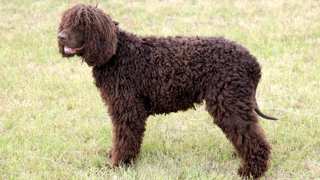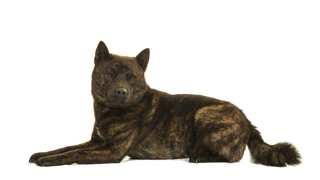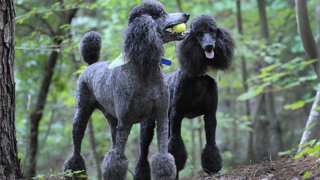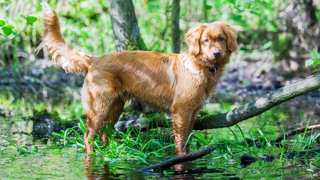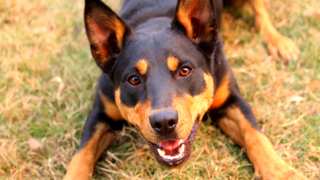The Portuguese Water Dog diet is essential to keeping these dogs healthy and long-living. As with any breed, Porties will need food that's high in animal proteins and carbohydrates--and since this breed has spent centuries working with fishermen, fish has been a big part of its diet. The best Portuguese Water Dog food, then, is a premium dry kibble, as this type has the above-listed nutrients a Portie requires; cheap, generic, "store-brand" foods simply won't provide enough long-term nutrition for the dog to remain healthy. PWD owners are also urged to include fresh or canned fish (cod, sardines, tuna, or swordfish, among others) to their dogs' meals at least three times per week.
Regarding daily portions for your Portie: a mature PWD, depending on its age, size, and activity level, will need about three cups of premium dry food per day, divided into two meals. A Portie puppy, again depending on its age, will need somewhat less: about two cups per day, divided into three meals (not two) until six months old. It's a good idea to feed a young PWD puppy food for its first nine months or so, then you can transition to adult food by mixing the two types for a few days. It's also recommended that you establish a consistent feeding schedule for your Portie so it gets used to eating at the same time every day.
For more details on feeding a Portuguese Water Dog, see this chart:
Portuguese Water Dog Feeding ChartDog AgeDog WeightFood TypeAmountFrequency2 Months8 lbsDry (Puppy formula)0.3 cups3x/day3 Months15 lbsDry0.5 cups3x/day6 Months30 lbsDry0.7 cups3x/day9 Months40 lbsDry* (Puppy/Adult)1.25 cups2x/day12 Months+50 lbsDry (Adult formula)1.5 cups2x/day*--Around this time, transition to adult food by first mixing just a bit of adult formula with the puppy formula. Over the course of a week, with each meal add a little more adult food to the mixture until the dog is eating it entirely.
Try to stick to the above-listed portions. Though a Portie could eat much more, these amounts are ample enough--and your PWD will possibly become obese if overfed too often, which will lead to joint, breathing, and digestive problems, not to mention a shortened lifespan. You can control a Portuguese Water Dog's weight in several ways: by establishing regular feeding and exercise schedules; by not feeding the dog table scraps; and by not leaving food in the dog's bowl all the time, thereby allowing it to eat anytime it wants. It's better to put your Portie's bowl down only at mealtimes, then pick it up a few minutes after the dog begins eating.
If you're worried your Portuguese Water Dog is overweight, give the dog this simple test: run a hand along its side, and if you can't feel any ribs, it's diet time. Reduce your Portie's daily food consumption by one-fourth, and add an extra walk, jog, or play period to its daily exercise schedule.

